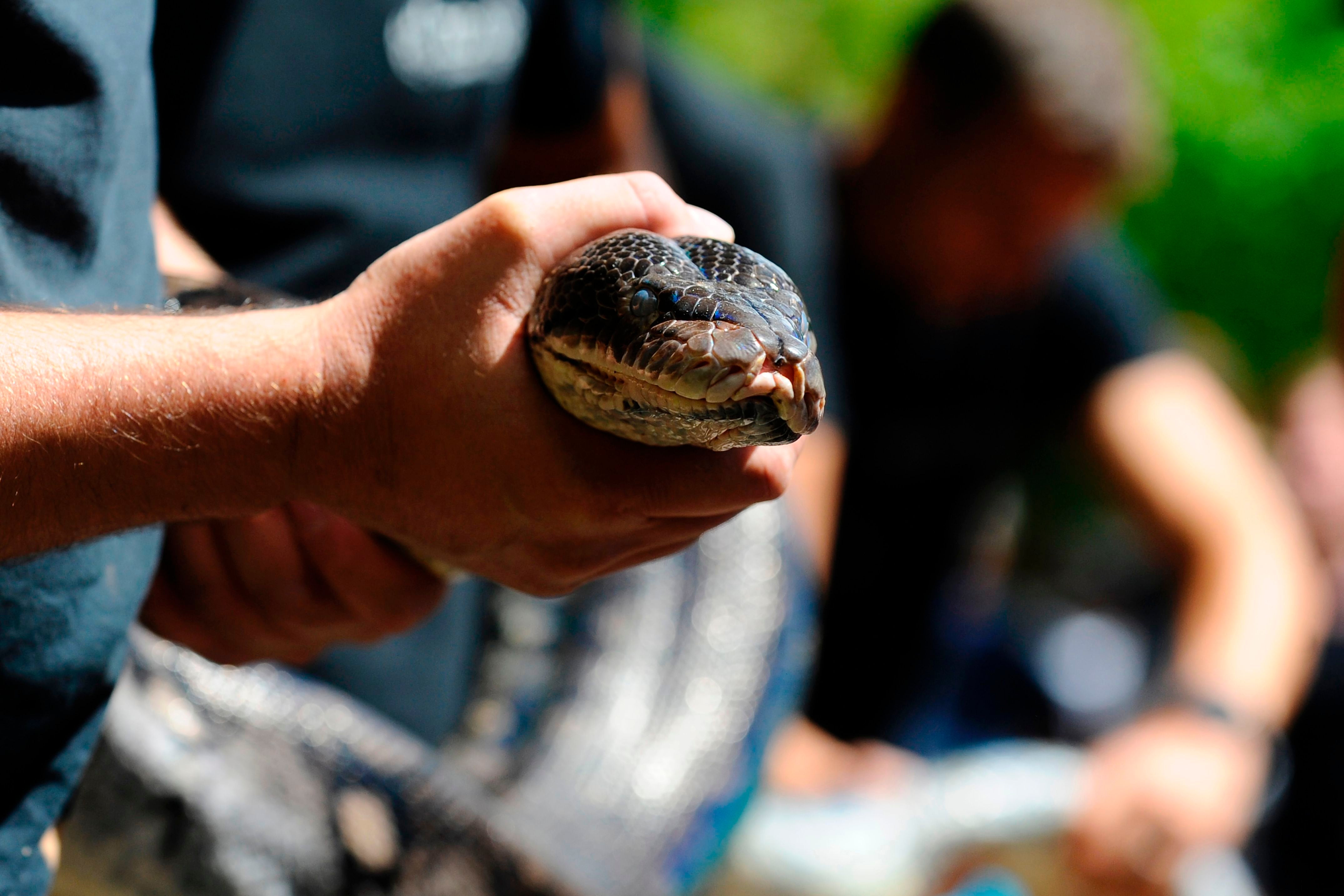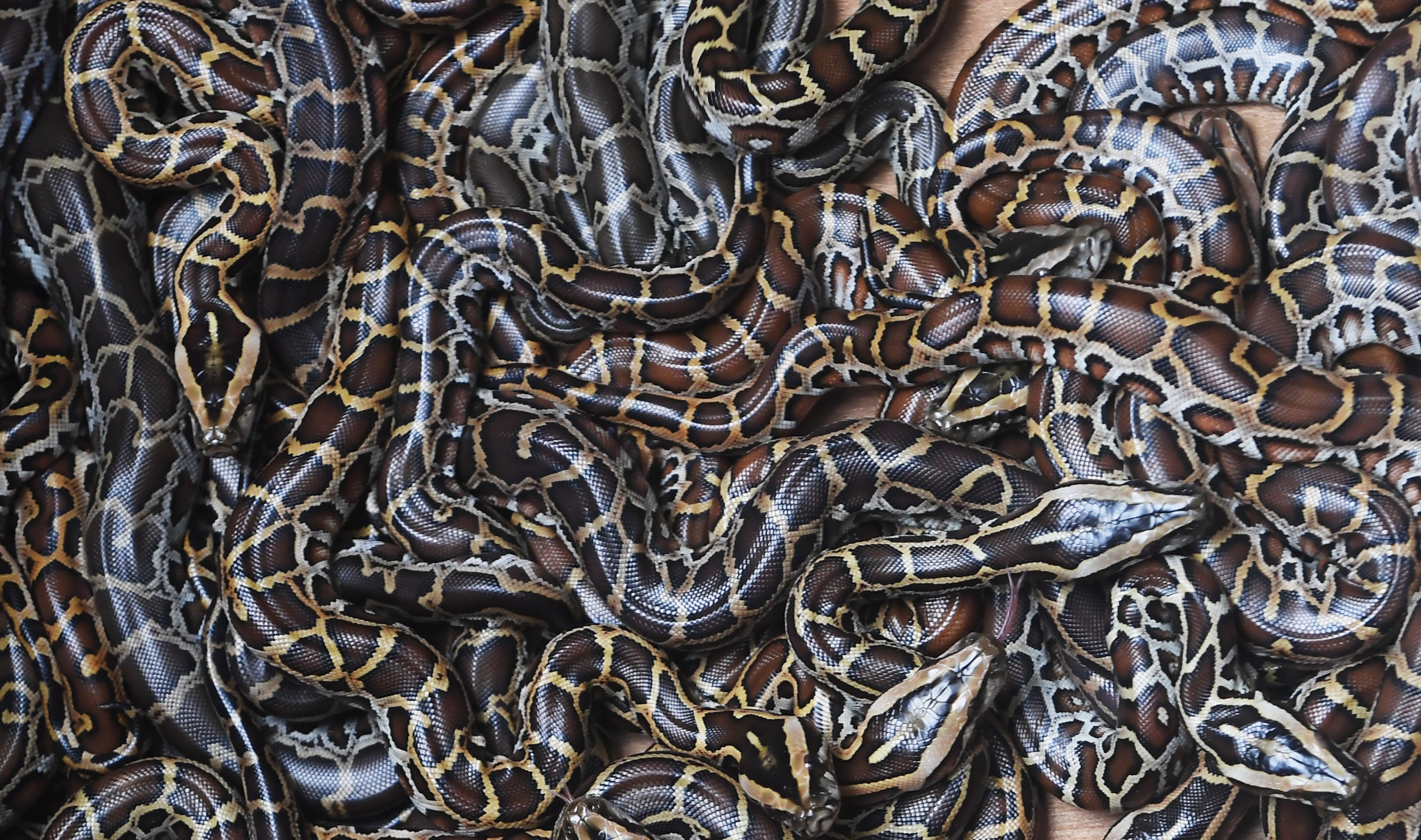Giant python caught swallowing even bigger python alive in world first
Scientists suspect rare incident sparked by fight for territory
Your support helps us to tell the story
From reproductive rights to climate change to Big Tech, The Independent is on the ground when the story is developing. Whether it's investigating the financials of Elon Musk's pro-Trump PAC or producing our latest documentary, 'The A Word', which shines a light on the American women fighting for reproductive rights, we know how important it is to parse out the facts from the messaging.
At such a critical moment in US history, we need reporters on the ground. Your donation allows us to keep sending journalists to speak to both sides of the story.
The Independent is trusted by Americans across the entire political spectrum. And unlike many other quality news outlets, we choose not to lock Americans out of our reporting and analysis with paywalls. We believe quality journalism should be available to everyone, paid for by those who can afford it.
Your support makes all the difference.Scientists in Bangladesh have documented a 10-foot-long Burmese python swallowing alive a reticulated python, an unprecedented encounter involving two of the world’s largest snake species.
Wildlife researchers at the Akiz Wildlife Farm in Chittagong spotted the Burmese python coiling tightly around the other snake and swallowing it up from its tail.
It took the python about two hours to devour its prey completely, according to a report published in the journal Reptiles and Amphibians recently.
The incident took place in October 2020.
The reticulated python sought to defend itself by constricting the Burmese python but loosened its grip after it was subjugated, scientists said.

Scientists are perplexed by the behaviour as the wildlife farm had better food options available for both snakes.
They suspect a territorial dispute may have led to one python eating the other.
The Burmese python and the reticulated python are the only types of python found in Bangladesh and they are both on the United Nation’s Red List of threatened species.
The Burmese python grows up to 16 feet long and is found across Bangladesh. The reticulated python, the world’s longest, can grow up to 22 feet and is found in the eastern regions of Sylhet and Chittagong.
The border region in Chittagong between India and Myanmar is a biodiversity hotspot that is home to many species, including the two pythons.
This area is also home to lizards, rodents, monkeys, small carnivores, deer, and wild boar, all of which are potential prey for the snakes.

Both pythons, native to South Asia and Southeast Asia, are found mostly in forest regions and occasionally in gardens and farms.
Scientists counted the chickens living on the Akiz Wildlife Farm and found that none had been eaten by either snake.

Based on these observations, scientists suspect that the rare incident was likely sparked by a fight for territory.
“To the best of our knowledge, this observation represents the first documented predation of M reticulatus by P bivittatus,” they said.

Join our commenting forum
Join thought-provoking conversations, follow other Independent readers and see their replies
Comments